Background
The molecules are widespread in cosmic objects, they have been noted at the beginning of 20 century. To date, more than one hundred kinds of interstellar molecules have been found. They have more than three thousands of different transitions, the radiation wavelengths range from centimeter to millimeter, submillimeter and near-infrared, which makes molecular line observations very important to the study of astrophysics.
Observation System
Molecular line observation system at centimeter wavelength was built on 25 meter radio telescope in Nanshan station in 1997. Figure 1 displays the sketch diagram of the system. The spectrometer was updated into dual input DFB system with 1 GHz band and 8192 channels in 2010, and 1.3 cm high sensitivity dual polarization cryogenic receiver was installed by the end of 2011. Now the molecular line observation system works mainly at 18, 6 and 1.3 cm, it can observe hydroxyl maser, formaldehyde absorption line, hydrogen recombination line, H2O maser, methanol maser and ammonia.
Research Field
Our research focuses on molecular clouds and star formation, which includes (1) the molecular cloud, e.g. the distribution of dense gas of the Giant Molecular Clouds(GMCs), the structure and physical characters of the GMCs. (2) High-mass star formation, e.g. the initial conditions of high-mass star formation. The feedback of HII regions and triggered star formation; (3) masers, e.g. the water maser survey toward high-mass star forming regions.
Recent Results
In recent years, we have studied many high-mass star forming regions by observing formaldehyde absorption line and hydrogen recombination line at 6cm wavelengths. We found more than 200 new formaldehyde absorption line sources (Figure 2), and obtained the large scale distribution of formaldehyde in about 10 giant molecular clouds and corresponding physical information (Figure 3). The ammonia molecule line observation toward GMCs began in 2013, we will study the distribution of the dense gas in the GMCs, and the initial conditions of high-mass star formation. The ammonia line mapping of one filament in Taurus Gain Molecular Cloud indicates that the ammonia line could trace the dense structure very well (Figure 4).
Publications
Tang,X,D; Esimbek,J;Zhou.J.J; Wu.G, Ji.W.G; and Okoh.D, “The relation of H2CO,12CO,13CO and continuum in molecular cloud”,2012,A&A,in press
Ji,W.-G.; Zhou, J.-J.; Esimbek, J.; Wu, Y.-F.; Wu, G.; Tang, X.-D.“The infrared dust bubble N22: an expanding HII region and the star formation around it” 2012 A&A,544A,39J
Esimbek,Jarken;Zhou,Jian Jun.;Wu,Gang.;Tang,Xin Di “Infrared characteristics of sources associated with OH, H2O, SiO and CH3OH masers”2012 IAUS,287,178E
Zhou,Jian-jun; Esimbek,Jarken; Wu,Gang “22 GHz Water Maser Survey of the Xinjiang Astronomical Observatory” 2012IAUS,287,296Z
Chuanpeng Zhang,Jarken.Esimbek,Jian-Jun Zhou and Gang Wu“Large area mapping of formaldehyde at 4.8GHz toward gaint molecular clouds”,2012 Ap&SS,337,283Z
Zhimao Du, Jianjun Zhou, Jarken Esimbek and Chuanpeng Zhang” A H2CO and H110 survey of HII regions using 25-m radio telescope of Nanshan Station” A&A,2011,532,A127
Esimbek,J.; Zhou,J.; Zhang,C.“Large Area Mappings of Formaldehyde at 6-cm toward Giant Molecular Clouds”,2011IAUS..280P.154E
Zhou,J.J.; Esimbek,J.; Ji,W.G.“CO(3-2),CO(2-1) and CO(1-0) observations toward the Galactic bubbles N54, N73, N74, N82 and N130” 2011IAUS..280P.391Z
Gang Wu,Jarken.Esimbek,Jian-Jun Zhou and Xiao-Hong Han,” The 110 - 111 H2CO and H110 observations towards the giant HII region in cloud complex W43” ,RAA,2011 Vol.11 No.1,63-70
Xiao-Hong Han,Jian-Jun Zhou,Jarken Esimbek,Gang Wu and Ming-Fei Gao” H2CO and H110 survey toward UCHII regions” ,RAA,2011 Vol.11 No.2,156-162
Ji-Mang Mu, Jarken.Esimbek, Jian-Jun Zhou and Hai-Juan Zhang” Characteristics of Infrared Point Sources Associated with OH Masers” RAA. 2010 Vol.10 No.2, 166–172
Hai-juan Zhang,Jian-jun Zhou,Guo-liang Dong,Jarken Esimbek, Ji-mang Mu“The properties of a large sample of OH/IR stars, S stars and C-rich AGB stars” 2010Ap&SS.330.23Z
Esimbek Jarken, Wu Yuefang, Wang yang. “A mapping study of massive cores with 13CO J=1-0 line”2008,New Astronomy, 13, P.144-156
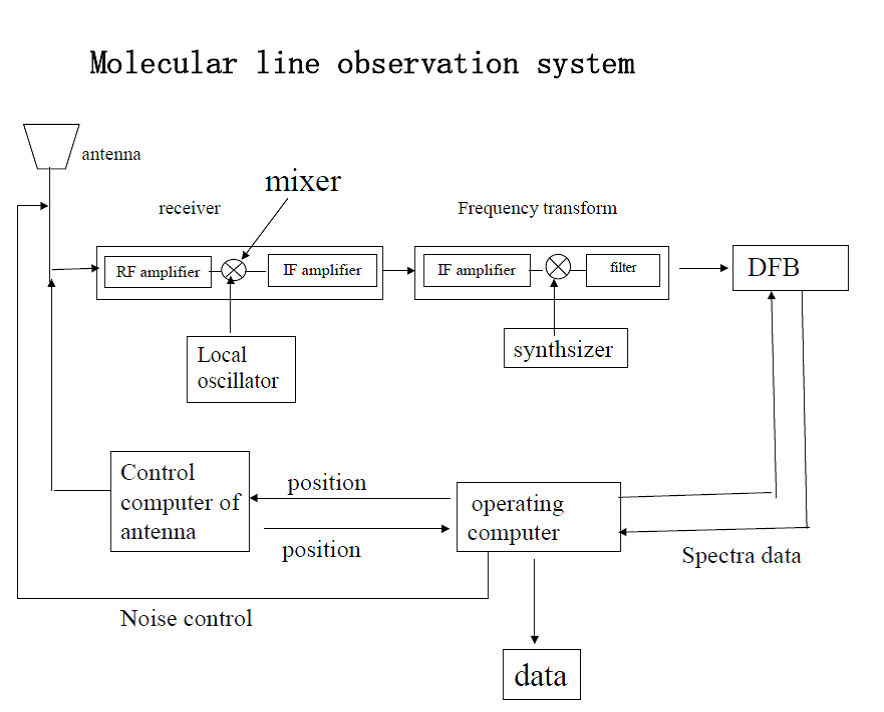
Figure.1: The sketch diagram of the molecular line observation system.
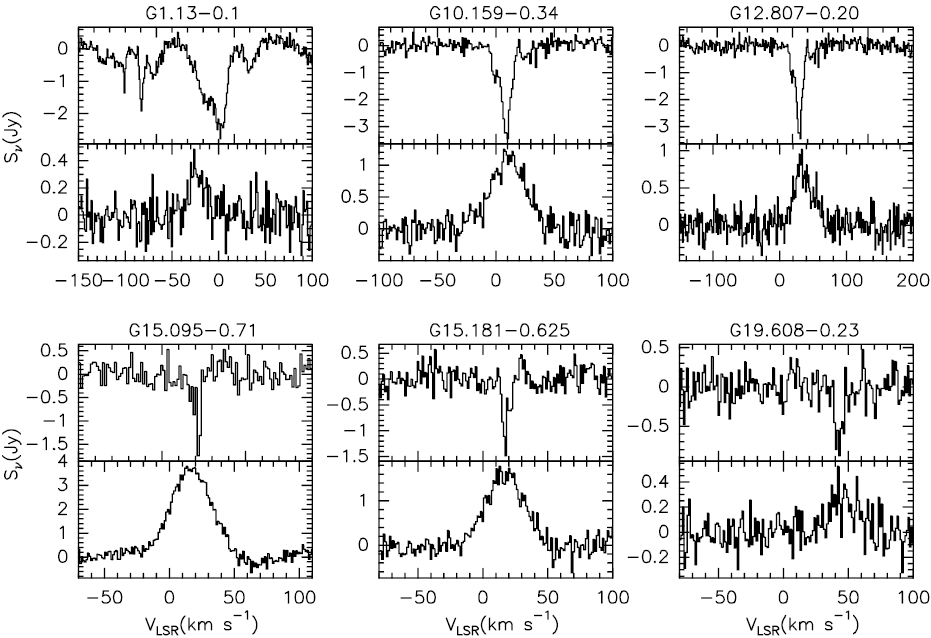
Figure.2: The new formaldehyde absorption line and hydrogen recombination line sources detected by us.
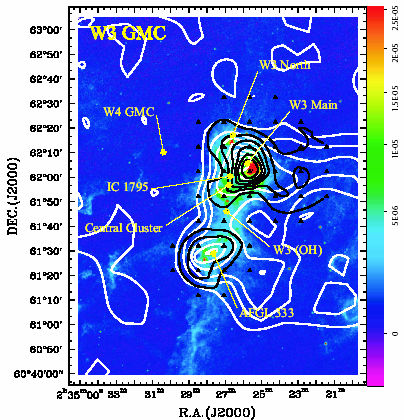 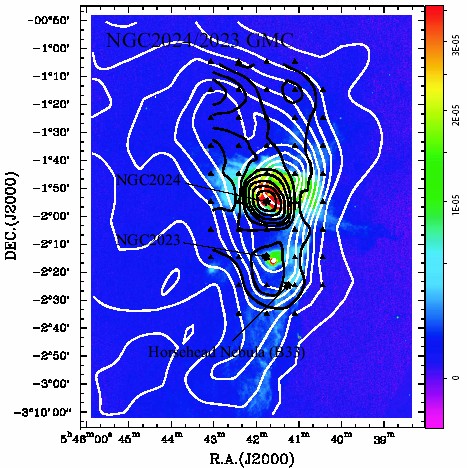
Figure.3: The formaldehyde absorption line mapping observations of the high-mass star forming regions W3 and NGC2024/2023.
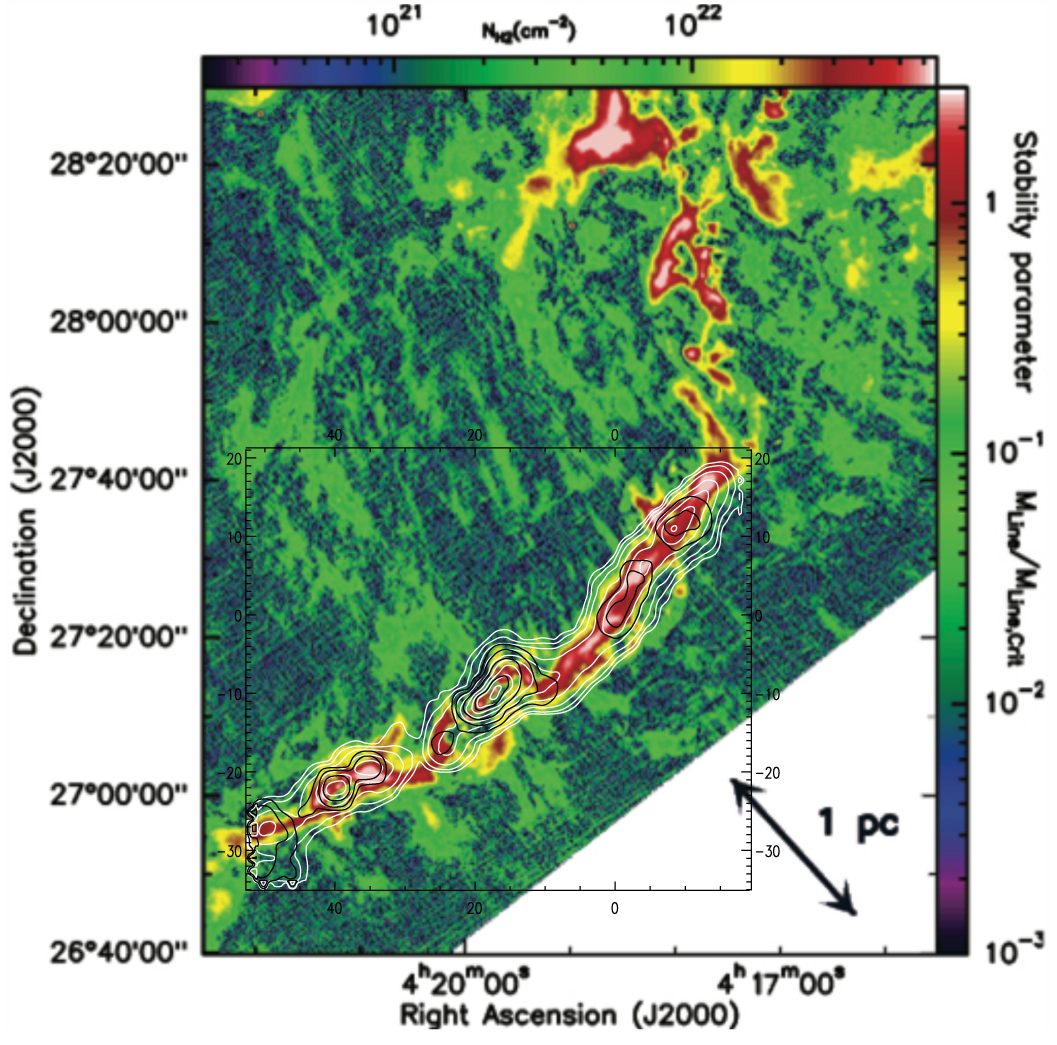
Figure.4: Ammonia line map of the filament in Taurus GMCs.
|